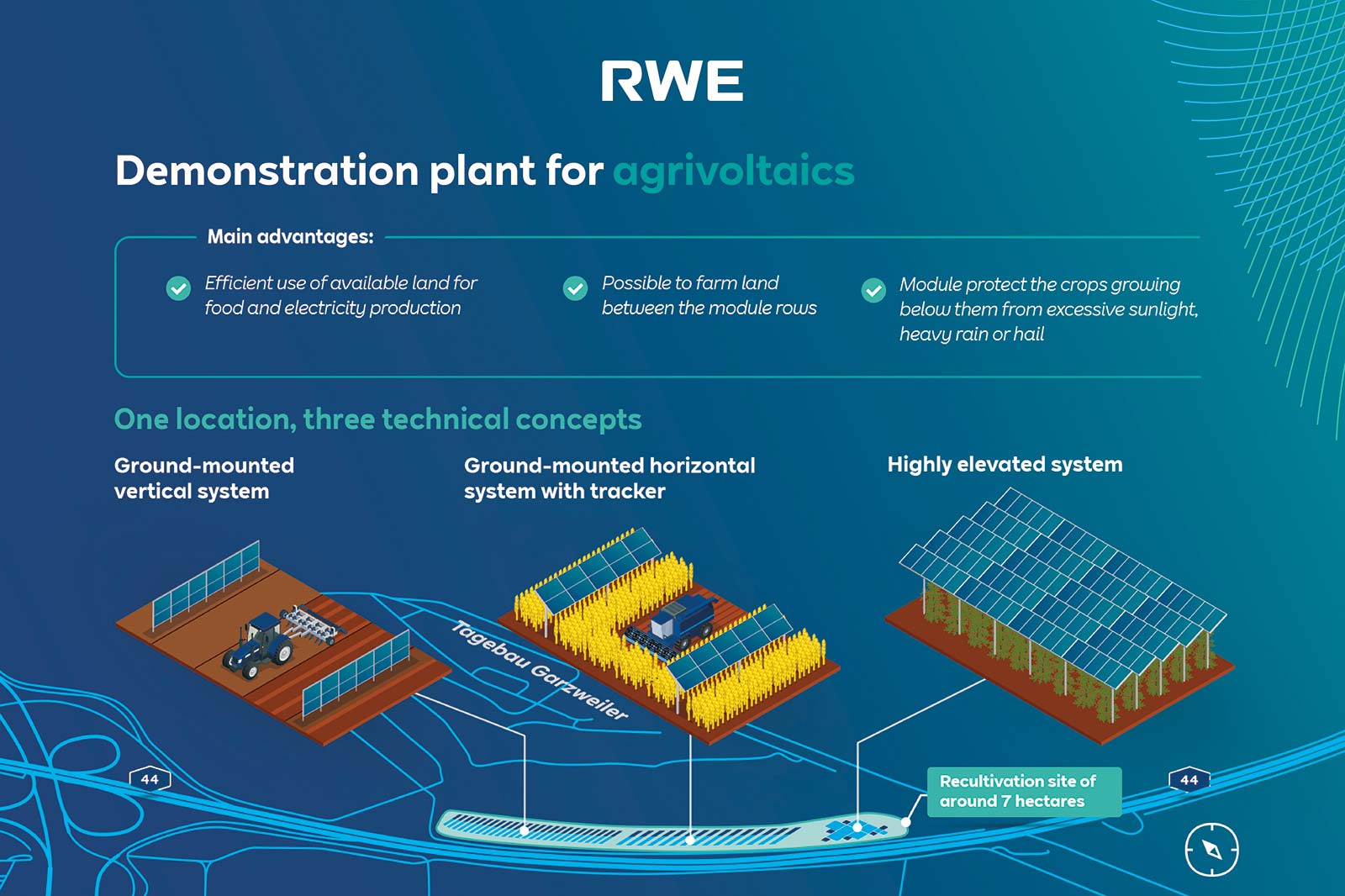Clean power from RWE for UK’s biggest water provider Thames Water
19.12.2025
Producing green electricity and agricultural crops together on one field – RWE is testing how these two objectives can be best combined at a demonstration plant (3.2 megawatts peak) for agrivoltaics (Agri-PV) in the Rhenish mining area. In Bedburg, at the edge of the Garzweiler opencast mine, around 6,100 solar modules have been producing green electricity since the start of 2024, enough to supply the equivalent of 1,044 German homes with climate-friendly power. In addition, grain and raspberries are being cultivated here, and for about a year, research has been conducted on how power generation and agriculture can function together. The initial insights are now available.
Katja Wünschel, CEO RWE Renewables Europe & Australia: “The need for large areas of land to further expand solar electricity generation makes the symbiosis of agriculture and photovoltaics a particularly valuable proposition. We have been performing important applied research for about a year at our demonstration plant in Bedburg. It is encouraging to see that we are achieving a good-quality harvest and high yields comparable to those from conventionally managed locations. I am already looking forward to what else we will learn in the coming years.”
One site, three different agrivoltaics solutions tested
At its demonstration plant, RWE is examining the interaction between plant growth and photovoltaics over a period of several years under different seasonal weather conditions. The aim is to develop suitable management methods and economic operating concepts for agrivoltaic systems on the basis of the knowledge gained. RWE is therefore testing three different technologies on the approximately seven-hectare recultivation site.
The first variant uses a vertical design with the solar modules installed rigidly on the substructure, similar to a fence. In the second variant, known as a tracker system, the modules are mounted on a movable axis, enabling them to follow the course of the sun from east to west.
Agricultural crops are grown between the rows of solar modules, including spring barley and spring and winter wheat. An agricultural firm from Grevenbroich has harvested the grain crops in recent weeks. These are now being processed further, for example into flour for baked goods or for brewery use.
Protecting the soil is a particularly important factor in agrivoltaic systems. Therefore, care should be taken to preserve the original soil structures already during the construction phase. The use of vehicles with tracked wheels can be helpful in this regard.
For sowing and harvesting it is important to ensure a sufficient distance between modules to allow the agricultural machinery to pass through, and there must also be enough room for the vehicles to turn near the modules. In addition, with the tracker system, a safety distance of one metre between the agricultural machinery and the modules must be assured to prevent damage to both the modules and the machinery. The tracker must also be easy to operate to make the farmers’ work easier. This system ideally requires plants that grow no higher than one metre, so that no shade is cast on the solar modules. Initial measurements for both systems – tracker and vertical – show soil humidity to be homogeneous, including below the PV modules, since they allow rainwater to pass through and the shadow cast by the modules reduces evaporation. This has a positive effect on plant growth. The first year of the trial showed that the crop yield for both agrivoltaics systems was comparable to that of the reference area, and was even of somewhat better quality, especially in terms of protein content.
In the third version, the PV modules were elevated on a pergola-like substructure, which is suitable for fruit growing and viticulture in particular. Below the solar modules in Bedburg, raspberries are being grown in pots. A local farmer cultivates and harvests them, and sells them in the region. The result shows that cultivation in pots and below the modules enables healthy plant growth with high-quality yields and also allows for better planning of harvesting times. A particular positive is that the solar modules protect the raspberry plants against storms and extreme direct sunlight. The harvesters also appreciate the weather protection. Another advantage is that farmers can use the solar plant substructure simultaneously as a cultivation frame for the plants and to attach a watering system.
Scientific input for the project is being provided by the Institute for Plant Sciences at Forschungszentrum Jülich and the Fraunhofer Institute for Solar Energy Systems (Fraunhofer ISE). The project was funded by the state of North Rhine-Westphalia via the progres.nrw programme for climate protection and energy transition.
Images of the Agri-PV plant as well as a graphic for media use are available at the RWE Media Centre (credit: RWE / photographer: Klaus Görgen).
